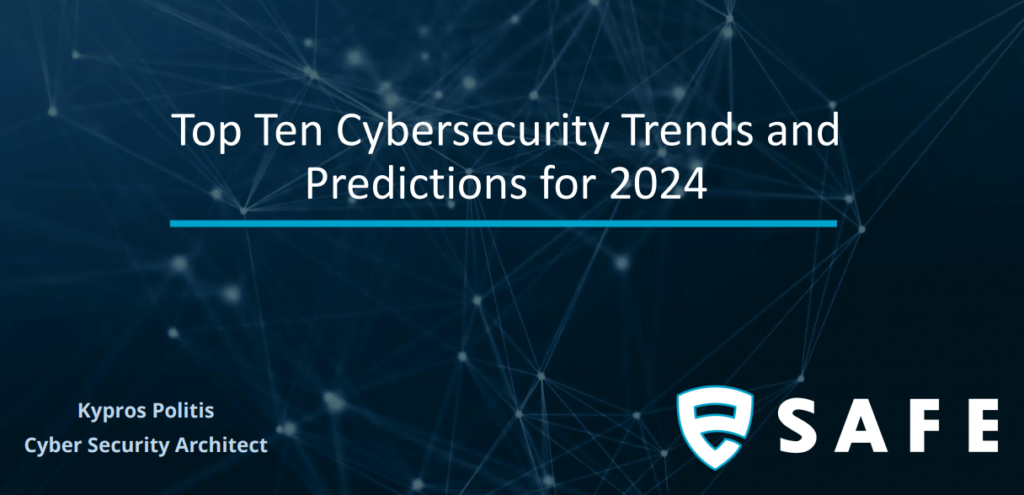It is imperative that we acknowledge the dynamic nature of cyber threats in 2024 as we traverse the quickly changing environment of cybersecurity. According to Gartner, end-user expenditure on security and risk management would increase by 14.3% from 2023 to $215 billion globally in 2024. The increasing complexity of digital threats is reflected in this investment. We look at the top ten cybersecurity trends, each of which brings unique issues that require sophisticated solutions from cybersecurity specialists.
Trend 1: Increased Focus on AI and Machine Learning in Cybersecurity
Trend 2: Growing Importance of IoT Security
Trend 3: Expansion of Remote Work and Cybersecurity Implications
Trend 4: The Rise of Quantum Computing and Its Impact on Cybersecurity
Trend 5: Evolution of Phishing Attacks
Trend 6: Enhanced Focus on Mobile Security
Trend 7: Zero Trust Security
Trend 8: Cybersecurity Skills Gap and Education
Trend 9: Blockchain and Cybersecurity
Trend 10: Cybersecurity Insurance Becoming Mainstream

1: Increased Focus on AI and Machine Learning in Cybersecurity
AI and Machine Learning (ML) will play an increasingly important role in cybersecurity in 2024. AI’s strong data processing capabilities are being employed to identify and predict cyber threats, hence improving early detection systems. ML algorithms are evolving to better recognize and respond to new threats, resulting in more effective defensive measures over time. AI algorithms will provide real-time threat analysis in 2024, allowing for faster and more accurate responses to cyber disasters. Machine learning is anticipated to progress to the point where it can adapt and update cybersecurity measures autonomously, minimizing the need for manual upgrades. We may also see the introduction of AI powered security bots, which are taught to independently discover and eliminate cyber threats, making network security more proactive rather than reactive. These breakthroughs represent a transition toward more intelligent and autonomous cybersecurity systems, fueled by advances in AI and ML.
2: Growing Importance of IoT Security
As 2024 unfolds, the Internet of Things (IoT) continues to expand exponentially, linking a growing number of devices. This increase, however, introduces a variety of security challenges. The variety and availability of IoT devices make them appealing targets for cyberattacks, and the way they’re interconnected can lead to massive vulnerabilities. A major focus in 2024 will be on improving IoT security through a variety of approaches. A substantial step forward will be taken in the creation of more robust, standardized security mechanisms for IoT devices. This might include global encryption standards and required security certifications for new gadgets. Another area for improvement might be the incorporation of
AI and ML algorithms into IoT systems. These systems can detect anomalous patterns that indicate a breach, allowing for a faster reaction to threats. Furthermore, there will most certainly be a larger emphasis on user education regarding IoT security. As users become more aware of potential hazards and appropriate practices, the overall security posture of IoT networks improves. Finally, we may see an increase in the usage of blockchain technology to decentralize and protect IoT networks, making them less vulnerable to assaults against centralized systems. Overall, these developments point to a more secure and resilient IoT environment in 2024.
3: Expansion of Remote Work and Cybersecurity Implications
The rise of remote work, which has gained substantial traction, will continue to impact the professional scene in 2024. This transition needs a stronger emphasis on cybersecurity, particularly in ensuring remote access to work environments. ESafe Solutions Ltd emerges as a crucial participant in this scenario, providing reliable remote access solutions that meet the security requirements of this changing work model. ESafe’s solutions are designed to provide secure and smooth access to organizational resources regardless of the user’s location. Furthermore, ESafe Solutions ability to provide a secure connection across several networks while retaining high performance and ease of use makes it a must-have tool for enterprises transitioning to remote work. This assures operational continuity and a secure digital environment, which is critical in light of the increasing cyber threats connected with remote
access.
DOWNLOAD THE FULL REPORT to read the full report including the 7 remaining cybersecurity trends.

